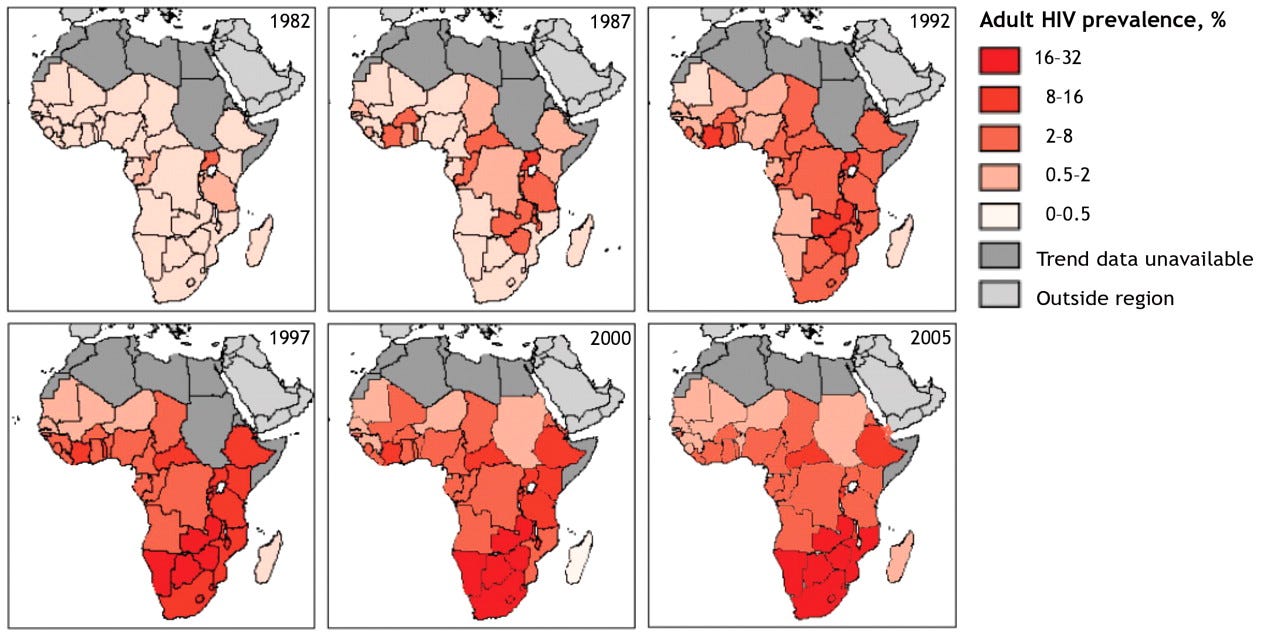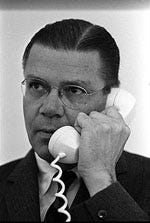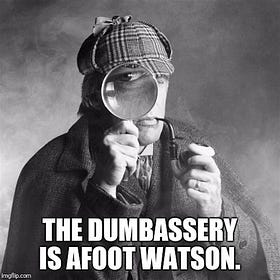McNamara's 'other' crimes: the stories you haven't heard
Jul 6, 2009Source: findarticles.com
The outrage and condemnation that have greeted Robert McNamara's In Retrospect: The Tragedy and Lessons of Vietnam ignore two major scandals of that war which have led to continued pain, anguish, and suffering. McNamara, too, conveniently ignored them in his bloodless account of how he and his colleagues in the Kennedy and Johnson Administrations were "wrong, terribly wrong" about Vietnam.
A few months after McNamara told Lyndon Johnson that the war was unwinnable, McNamara did his part to make Vietnam America's greatest class war with his brainchild, Project 100,000. At the same time, McNamara knew but remained silent about the highly toxic effects of Agent Orange. What the former Secretary of Defense omits in his book and during his talk show interviews bears review, particularly since there is the danger that the next generation will study McNamara's self-serving version in America's schools.
In 1966, McNamara initiated the "Moron Corps," as they were piteously nicknamed by other soldiers. Billed as a Great Society program, McNamara's Project 100,000 lowered military enlistment requirements to recruit 100,000 men per year with marginal minds and bodies. Recruiters swept through urban ghettos and southern hill country, taking some youths with I.Q.s below what is considered legally retarded.
In all, 354,000 volunteered for Project 100,000. The minimum passing score on the armed forces qualification test had been 31 out of 100. Under McNamara's Project 100,000, those who scored as low as 10 were taken if they lived in a designated "poverty area." In 1969, out of 120 Marine Corps volunteers from Oakland, California, nearly 90 percent scored under 31; more than 70 percent were black or Mexican. Overall, 41 percent of Project 100,000 volunteers were black, compared to 12 percent of the rest of the armed forces. Touted as providing "rehabilitation," remedial education, and an escape from poverty, the program offered a one-way ticket to Vietnam, where these men fought and died in disproportionate numbers. The much-advertised skills were seldom taught.
McNamara called these men the "subterranean poor," as if they lived in caves. In a way they did; their squalid ghettos and Appalachian hill towns were unseen by affluent America. All the better for McNamara and his president Lyndon Johnson. Unmentioned in Project 100,000's lofty sounding goals was the fact that - as protest became the number-one course of study at America's universities - the men of the "Moron Corps" provided the necessary cannon fodder to help evade the political horror of dropping student deferments or calling up the reserves, which were sanctuaries for the lily-white.
Officials denied that the members of the "Moron Corps" were dying in higher numbers, but the irrefutable statistics embraced by mathematical whiz kid McNamara tell another story. Forty percent of Project 100,000 men were trained for combat, compared with 25 percent of general service. In one 1969 sampling of Project 100,000, the Department of Defense put the attrition-by-death rate at 1.1 percent. By contrast, the overall rate for Vietnam era veterans was only 0.6 percent.
"I think McNamara should be shot," said Herb DeBose, a black first lieutenant in Vietnam, who later worked with incarcerated veterans. "I saw him when he resigned from the World Bank, crying about the poor children of the world. But if he did not cry at all for any of those men he took in under Project 100,000 then he really doesn't know what crying is all about. Many under me weren't even on a fifth-grade level.... I found out they could not read .. no skills before, no skills after. The army was supposed to teach them a trade in something - only they didn't."
As for Agent Orange, McNamara knew about its potential deadly effects even as it was being used in Vietnam, and long before veterans came home to die or waste away from the herbicide's after effects.
McNamara remained silent for years as the government stonewalled Vietnam veterans who claimed Agent Orange caused their cancer or nausea or violent rages or numbness in limbs or birth defects in their children. Veterans' pleas for testing, treatment, and compensation continued to be ignored.
Finally, in 1983, Judge George Pratt, Jr. agreed to hear the lawsuit of Vietnam Veterans against Dow Chemical for conspiring to keep hidden the truth about Agent Orange. For the first time, documents released by Pratt provided a detailed look at what the company and the government knew about dioxin danger and when. In 1965, when the government was purchasing millions of pounds of Agent Orange, Dow's internal report stated that dioxin could be "exceptionally toxic" to humans and that "fatalities have been reported in the literature." Pratt noted that McNamara attended meetings where the human health hazards of dioxin were discussed. In addition, said Pratt, McNamara's Defense Department commissioned a study which noted the "health dangers of the herbicide" in 1967.
After the war, McNamara could do nothing to change the millions of deaths and injuries inflicted on Vietnamese and Americans. But just think what McNamara could have done had he championed the veterans and their families; they were pawns then, no more than faceless numbers. It seems as though they remain so today.
He could have worked, as Admiral Elmo R. Zumwalt Jr. continues to do, to gain compensation for those killed or injured by Agent Orange. Zumwalt feels it is the least he can do for having ordered the use of the chemical, which killed, among others, his own son. Zumwalt, however, authorized the use of Agent Orange in innocence, unaware of its toxicity. McNamara has no such excuse.
McNamara does have one last chance to go down as a redeemed man, instead of just another name from the past flacking his memoirs and reaping royalties. He could donate the proceeds of his best-seller to programs helping Vietnam veterans.
Thanks to McNamara, they could surely use them.
Myra MacPherson "McNamara's 'other' crimes: the stories you haven't heard - Robert McNamara". Washington Monthly. FindArticles.com. 06 Jul, 2009. http://findarticles.com/p/articles/mi_m1316/is_n6_v27/ai_17040672/
Ivermectin, ‘Wonder drug’ from Japan: the human use perspective
…By 1973, Onchocerciasis had been recognised by the then head of the World Bank, Robert McNamara, as a major disease of massive health and socioeconomic importance and one in dire need of combating in West Africa, and he became the key agent for change. In 1974, following international recognition of the dramatic consequences of disabling and disfiguring Onchocerciasis in Africa, four United Nations agencies, including the World Bank, launched the Onchocerciasis Control Programme in West Africa (OCP). The programme covered 1.2 million km2, protecting 30 million people in 11 countries from River Blindness.
Drug donation
For over a decade, OCP operations were exclusively based on the spraying of insecticides by helicopters and aircraft over the breeding sites of vector blackflies in order to kill their larvae. Following the registration of ivermectin (produced under the brand name Mectizan®) for human use in 1987, in a hitherto unprecedented move and with unheralded commitment, Mectizan® was donated by the manufacturing company, Merck & Co. Inc., to treat onchocerciasis in all endemic countries for as long as it was needed. The resultant drug donation programme was the first, largest, longest running and most successful of all—and proved a model for all others that have followed. Ivermectin began to be distributed in 1988, with operations being organized through the independent Mectizan Donation Program (MDP) established and funded by Merck. Thereafter, OCP control operations changed from exclusive vector control to larviciding combined with ivermectin treatment or, in some areas, to ivermectin treatment alone.
…In reality, ivermectin’s role in human medicine effectively began in April 1978 inside the Merck company, several years before the drug emerged on the Animal Health market. The highly potent bioactivity of a fermentation broth of an organism isolated by the Kitasato Institute in Tokyo, which had been sent to Merck’s research laboratories in 1974, was first identified in 1975. The active compounds were identified by the international multidisciplinary collaborative team as the avermectins, with the subsequently-refined ivermectin derivative being designated the optimal compound for development. Merck scientists, under the direction of Dr William Campbell, found that the drug was active against a wide range of parasites of livestock and companion animals.10) The informed foresight of a Merck researcher, Ms. L.S. Blair, resulted in the discovery that the drug was effective against skin-dwelling microfilariae of Onchocerca cervicalis in horses. These did not actually cause clinical disease and so the finding was of little commercial significance. However, O. cervicalis belongs to the same genus as O. volvulus, and upon reading the experimental reports, Dr Campbell surmised that there might be some merit in testing for impact against the latter. In July 1978, he sent ivermectin (as a coded sample), together with the results of the horse trial, to the TDR-supported tertiary cattle screen in Australia. The results, obtained in November 1978, showed that ivermectin was “highly effective in preventing patent infections with both O. gibsoni and O. gutturosa”. This reinforced Campbell’s growing belief that ivermectin would be effective against human onchocerciasis. Consequently, in December, he proposed to the Merck Laboratories’ Research Management Council that “an avermectin could become the first means of preventing the blindness associated with onchocerciasis” and that “discussions be held with representatives of WHO to determine the most appropriate approach to the problem—from the medical, political and commercial points of view”.27,28) Senior management approved the lead taken by Campbell and research funding to investigate the potential use of ivermectin in humans was approved by Dr Roy Vagelos, then President of the research laboratories.
TDR reactions to the initial data about ivermectin were rather muted, especially as it was searching for a macrofilaricide and ivermectin appeared to have little impact on adult worms. In late-1979, a TDR official visited Merck and, although the meeting resulted in TDR’s technical contribution to Merck’s ivermectin research, there was no ensuing discussion about collaboration to develop ivermectin for use in human Onchocerciasis.
Fortunately for all, in January 1980, Merck decided to proceed independently to Phase I (safety) trials. Clinical trials of ivermectin began in 1981, with a Phase I trial in 32 patients in Senegal followed by another trial in Paris among 20 West African immigrants. These trials were independently organized and funded by Merck, with a staff member, Dr Mohamed Aziz, previously of WHO, being the caring and committed driving force behind them. Dr Aziz started the study in Senegal with safety uppermost in his mind. It began with a very low dose of 5 µg/kg and found that a single dose of ivermectin, 30 µg/kg, substantially decreased the number of skin microfilariae. It also established that the effect lasted for at least 6 months, with no serious adverse events being observed. The subsequent Paris study confirmed these results and showed that doses up to 200 µg/kg were well tolerated.29,30)
When Merck officials visited TDR and OCP in 1982 to present the results from the Phase I trials, each side recognised the immense potential and collaboration in earnest began.
Evidence suggests that collaboration between these major partners commenced in a complex environment of mutual wariness, suspicion and shared hope that ivermectin would indeed prove to be an effective treatment for Onchocerciasis. The situation was compounded by the fact that Merck saw ivermectin as a potentially commercial product to be used for individual patient treatment, and moved forward constantly seeking an income return on its investment. In contrast, TDR, together with OCP, saw the drug as a new community-level tool that could possibly interrupt parasite transmission and thereby help reduce the prevalence of the disease in endemic communities. TDR and OCP consequently regarded community-based trials under field conditions as an essential step towards mass-treatment programmes, as opposed to the individual treatment in hospitals favoured by the commercial partner. The continual negotiation with respect to the cost of the drug eventually resulted in a commitment from Merck in July 1985 to supply it in sufficient quantities and at the lowest possible price consistent with the interests of the company, later confirming that it would be made available to “… governments and patients at no cost to them for the treatment of Onchocerciasis”.31)
With respect to official registration of ivermectin for human use, Merck, focusing on the single-patient approach, pressed ahead on its own and submitted an application to the French health authorities in 1987 based solely on the studies of the first 1,206 onchocerciasis patients, expecting to receive approval later that year, which it subsequently did.24,32) In its submission, Merck indicated a price of $3 per tablet, meaning that a treatment dose would cost $6, well beyond an affordable amount for those most in need.
Ivermectin and Human Fertility and Safety Studies
Ivermectin, a drug long used to treat parasitic infections, has recently become a topic of heated debate. Promoted by so-called freedom-fighting physicians and others, ivermectin has been touted as a miracle prophylactic or cure for COVID-19, despite ongoing debates about what COVID-19 truly is. Amidst this controversy, many people have taken matters in…










Another great piece BB! One of your best. Thank you. It got me thinking about the motivation for the movie "Forest Gump" Readers may recall that both the protagonist "Forest" and his best buddy. "Bubba" might both have been Macnamarra's Vietnam Morons. Just Thinkin.